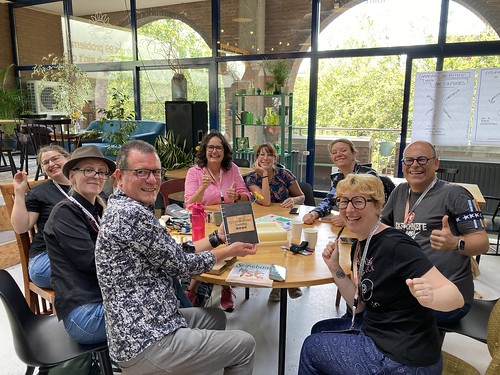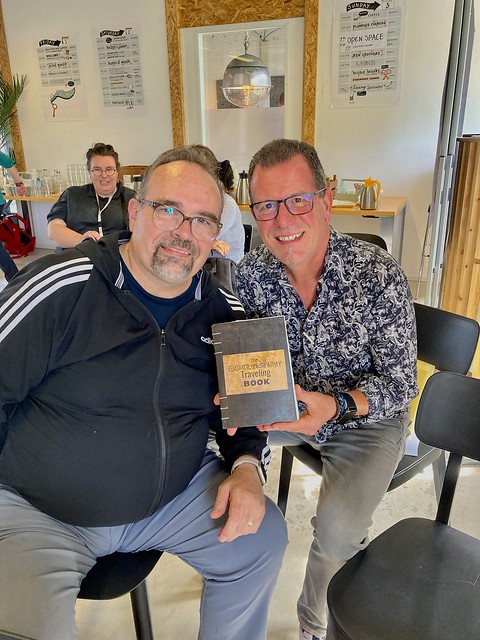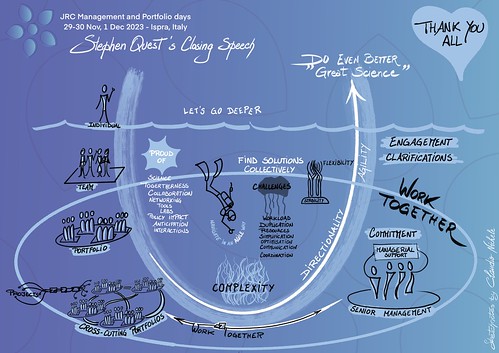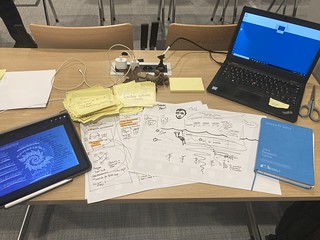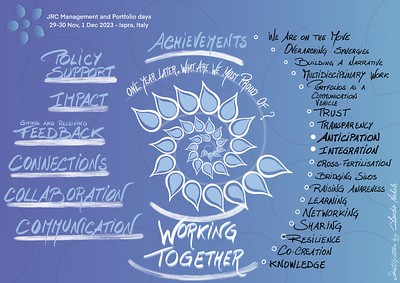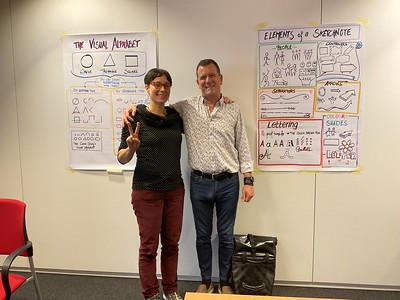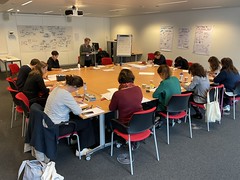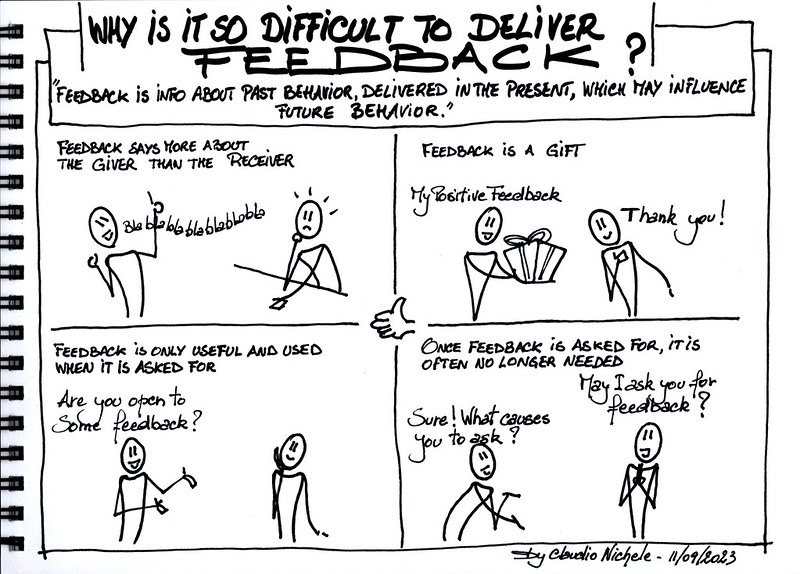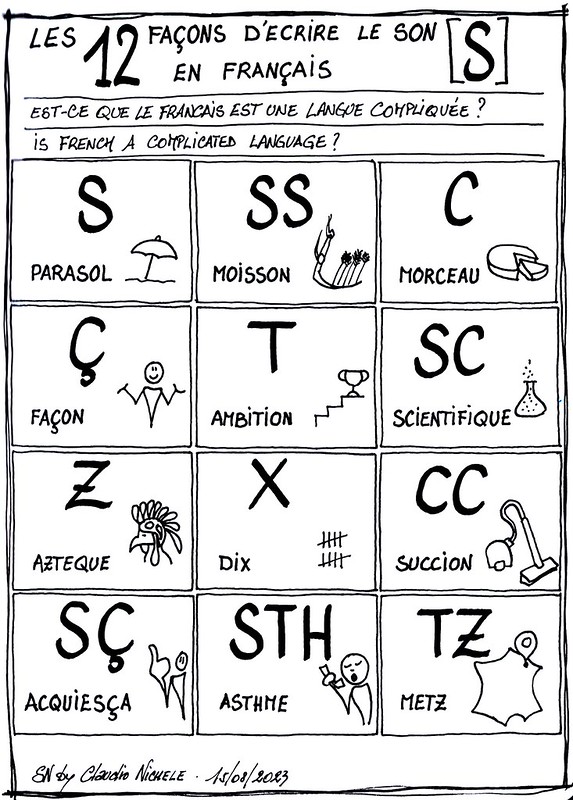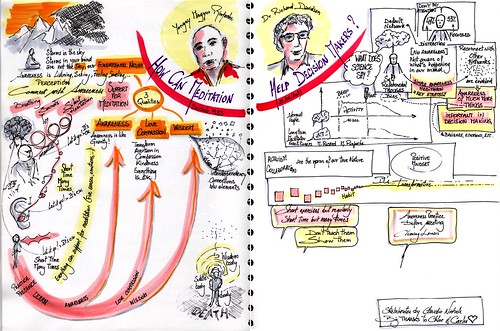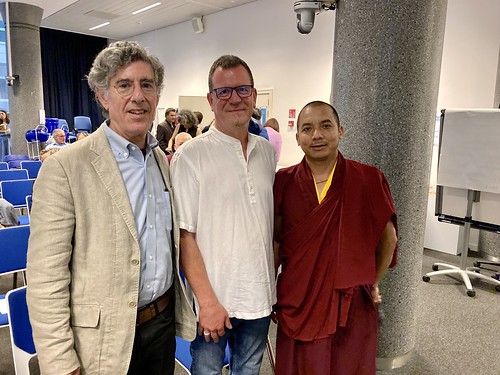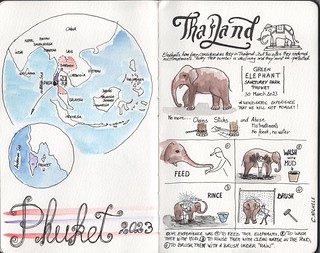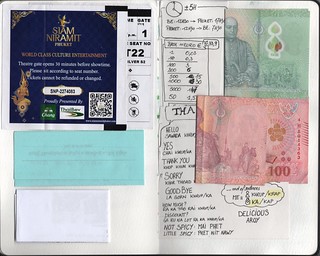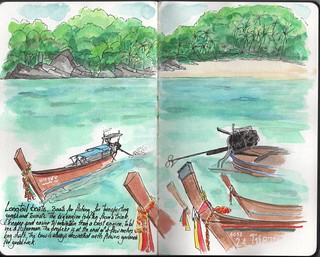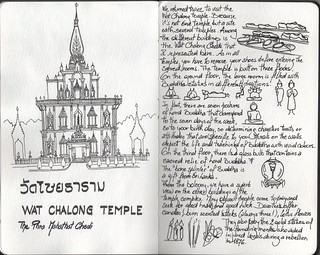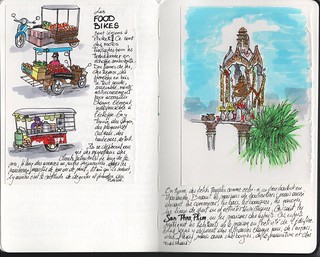In the quaint village of Merate, just a stone’s throw from Milan, Italy, the year 2016 witnessed the inception of an unusual tale. Mauro Toselli, with a craftsman’s touch, conjured a rugged, handcrafted notebook – 112 pages of uncharted potential, encased in a shield of his own making. This was no ordinary notebook, it was destined for a global rendez-vous, passing through the hands and markers of the sketchnoting community.
If you don’t want to read what follows but just discover the stages of the book’s extraordinary journey then see the visualisation I made of it.

Mauro unveiled his project in a blog post, imparting instructions to those future recipients who would guide the Sketchnoting Army Traveling Book through its global pilgrimage. Mauro poured his heart into this project, unleashing it into the world with a mission to return home by 2018. With emotions and a longing to release his creation into the unknown, Mauro sent it across 12.450 kilometers to Pastor Gary Lau on Hawaii Island. Perhaps a destination nearer than the ends of the world would have made the parting more arduous.
Nevertheless, from that day forth, the notebook assumed an existence shaped by the destinations, moods, and decisions of the sketchnoters yet to encounter its pages. Its journey unfolded, chronicled by sketchnoters proudly displaying their contributions with the #SABookjourney hashtag on the ever-scrolling tapestry of social media.
Yet, as the days unfolded, Mauro’s initial script began to blur. The one-week tenure prescribed for each sketchnoter’s custody stretched, and the once-vivid digital traces on social platforms dimmed. The notebook, akin the mythical Loch Ness denizen or a phoenix reborn from the ashes, would appear and vanish from the tapestry of time, adorned with new sketchnotes.
Two years waltzed by, and the notebook, a wayfarer with a mind of its own, resisted the call to return to Milan. It traversed short distances and quantum-leapts, like the 16.600-kilometer leap from Claire in the Netherlands to James in Australia in July 2017.
As time wore on, the apparitions of the notebook grew rarer, and, on occasions, it seemed lost. Then came the unforeseen twist – the advent of the Covid pandemic in 2020. Stranded in France during the lockdown, the notebook, alongside sketchnoters, confronted the indiscriminate virus. Yet, some, bound by an unyielding resolve, launched appeals across social networks, seeking tidings of the elusive book. Amid whispers of the notebook’s demise, a few tenacious seekers tracked it down, compelling it back on its journey. But the world had changed, and the notebook navigated a less conspicuous route, eluding the notice of the old guard.
Emerging from the labyrinth of the Internet, the notebook resurfaced in 2022 in the possession of my comrade Valentine in the realm of Belgium. In Belgium, where I reside. From that moment forth, my gaze remained steadfast upon it until, at last, it rested within the cradle of my own hands.
The prologue to the notebook’s homeward journey had commenced, unbeknownst to Mauro, its father. Before orchestrating its clandestine return, some sacred duties still beckoned. In the company of my confidants organisers of the International Sketchnote Camp of 2021, we bestowed our collective sketchnotes upon its pages. And, in due course, I, too, inscribed my own sketchnotes upon it.
For its final sojourn to encounter new sketchnoters, the tome accompanied me to Leiden in the Netherlands for the International Sketchnote Camp 2023. The elder members of our sketchnote community found themselves stirred at the revelation of the notebook’s presence at the camp, and for some, it marked a reunion after the passage of many a year.
As for the fledgling members, their enthusiasm knew no bounds upon encountering this roving tome, bearing the signatures of numerous sketchnoters. Mike Rohde radiated joy as he cradled the notebook once more, a book he had adorned with his signature six years prior in the confines of his abode in Wisconsin, US.
In hushed tones, I confided in Mike, unveiling my covert plan to reunite the notebook with Mauro in the coming weeks. A clandestine pact to keep silent, letting the illusion persist that the notebook had rekindled its worldwide trip after its Leiden escapade.
Amidst the camaraderie, on a sunlit Sunday in October 2023, after a day exploring Lake Como, I surprised Mauro with a package from my bag, marking the poignant end to the notebook’s odyssey. See what he said about this moment on his blog.
This was the Return of the Sketchnote Army Traveling Book.

